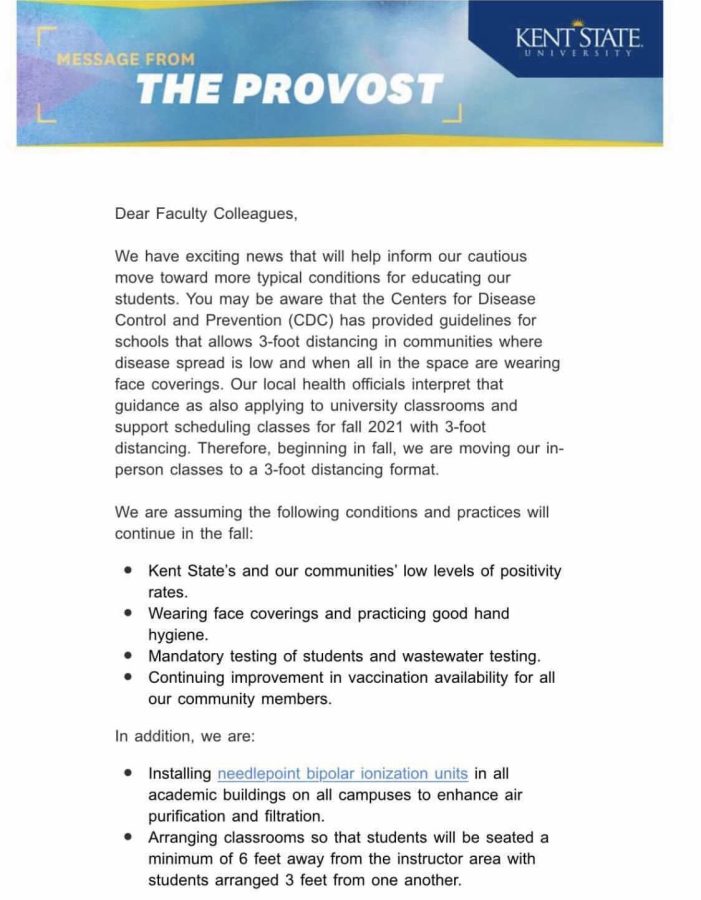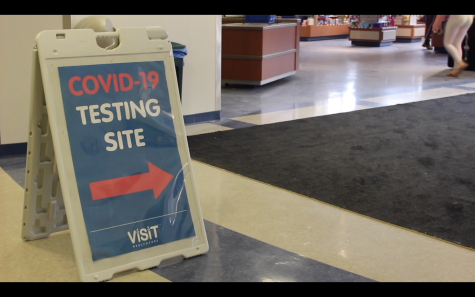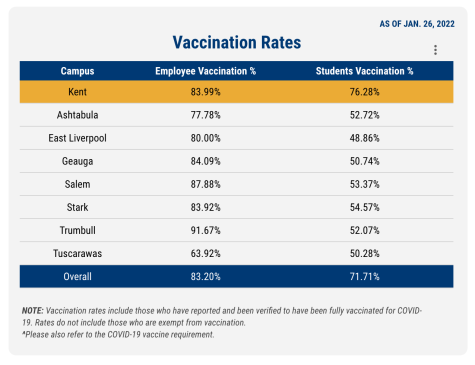Petition against 3-foot distancing circles around Kent State students
April 9, 2021
Updates to the COVID-19 safety guidelines changes distancing requirements from six feet to three feet and are met with mixed opinions as KSU prepares for fall semester registration.
An email was sent to faculty in late March notifying them of the adoption of the CDC’s K-12 school operational strategy, which recommends students remain at least three feet apart. Students received an email from the university with information about the strategy April 8. This decrease in distancing will allow for more in-person classes to be held with a greater number of students.
“Having students vaccinated and having faculty vaccinated makes it a much more feasible approach to the fall semester,” said KSU President Todd Diacon. He referred any additional questions to Manfred van Dulmen.
Van Dulmen, chair of the Pandemic Leadership Committee, said that this is a preliminary plan and, like many other guidelines introduced in the past year, is subject to change. The decision was made under the assumption that the vaccine is widely available and that disease spread is low.
“These are conversations we have as part of the state’s [Inter-University Council] reopening committee, and then in addition to that, we have our public health experts, a pandemic committee that the city health commissioner is part of,” van Dulmen said. “Based on input from our health experts and their review of the current CDC guidelines, they felt we could move to that strategy for the fall semester. ”
The strategy is to be used with universal masking and students getting vaccinated. Areas with higher community transmission should still follow the six-foot rule. The Ohio Department of Health currently ranks Portage County as a Level 3 Public Emergency, or a red zone — very high exposure and spread.
“We’ve seen an increase in positive cases on campus; this is a recent trend — about the last 10 days … not at the level of what we’ve seen in the fall but certainly something we’re aware of and we’re encouraging students to get tested and to be vaccinated,” van Dulmen said.
The strategy also specifies that the update is for K-12 guidance and does not mention institutions of higher education. Colleges and universities are still being recommended to use six-foot distancing.
Moira Armstrong, a junior majoring in English and U.S. history, felt that the operational strategy doesn’t guarantee the safety or proper protection from COVID-19. Shortly after the email was sent to faculty, they created a petition to keep the current guidelines of six-foot distancing.
“I think six feet is definitely the best choice; that’s the guidance from the CDC, and it paired with masks and increased vaccinations are the best way to prevent the spread of COVID,” Armstrong said. “Cases are on the rise, and they’re very high. So even if we did fall under the K-12 guidelines, which we don’t, we should still be going with six feet.”
While reducing the distancing guidelines will lessen the need for remote teaching, the distribution of COVID-19 vaccinations will help to ensure that in-person classes remain a safe space.
Even though KSU is encouraging everyone to get vaccinated, Armstrong said, achieving herd immunity would be difficult. They referenced a 2019 KentWired article about the MMR vaccine at KSU about the MMR vaccine at KSU — the vaccine is required for all Kent State students, but only 88 percent of students had the vaccine at the time of the article. The percentage needed for herd immunity against measles is 90-92 percent; they said the fact that herd immunity can’t be reached with a required vaccine is concerning when it comes to the COVID-19 vaccine, which the university has no current plans of mandating. The vaccine also doesn’t protect against variants, which are surging worldwide and already showing up in Ohio and across the U.S.
Armstrong believes the new strategy isn’t actually safe and doesn’t prioritize physical safety.
“The email [to faculty] states that students will be seated six feet away from the instructor, but students will be three feet away from each other,” Armstrong said. “If three feet is really safe, why do faculty need to be six feet away from the students? Why are they getting that extra protection that students aren’t going to have?”
Virtual learning brought up many struggles with motivation and understanding in class for students. By decreasing the distancing and expecting more in-person classes in the fall, there is hope that learning can return back to normal. Not only will the number of in-person classes rise, but the missed opportunities and experiences that have affected a number of students can begin once again.
Nina Graziano, an early childhood education major, said, “I feel that I have missed out on necessary experiences that will benefit me in the future. I look forward to in-person classes and student teaching opportunities in order to feel more comfortable and prepared to learn and adapt to the constantly changing world.”
Graziano went on to say that she felt virtual learning makes it more difficult to stay motivated and engaged and that it takes away from the ability to learn and benefit from lessons like students can when learning in-person.
Jennifer Wiggins-Lyndall, a professor of marketing and entrepreneurship, said, “Reducing the requirements for distancing to three feet will enable more classes to be held on campus, giving students a better learning experience and the social interaction that they have been missing.”
Masks will still be a requirement, which will also help to contribute to the safety of everyone on campus.
“I will be vaccinated well before the fall semester begins and it is my hope that most, or all, of my students will be as well,” Wiggins-Lyndall said. “With the precautions of vaccines and masks, I feel as safe with the three-foot distance as I do with a six-foot distance.”
Ethan Cohen is a COVID-19 reporter. Contact him at [email protected].
Olivia Perry is an on-campus reporter. Contact her at [email protected].


















